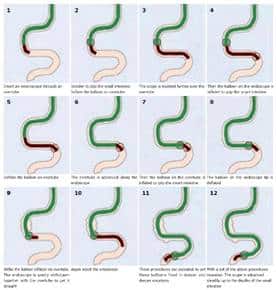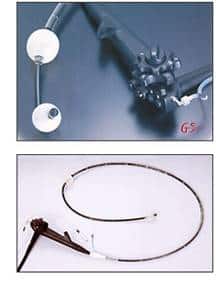It involves the use of a long narrowing examining instrument, which is passed through an outer tube that prevents it from looping in the intestine. Small balloons on the tip of the outer tube and the endoscope prevent the instrument from slipping backwards and allow the examination to proceed gradually through the intestine. The diagram below show the DBE instrument and illustrates how the procedure works.
The small intestine is the part of the intestine between the stomach at the upper end and the colon at the lower end. The small intestine is approximately 6 metres long, making it extremely challenging to examine. Standard gastroscopy and colonoscopy are only able to examine 20cm into the upper and lower ends of the small intestine. Capsule endoscopy is often used to examine the small intestine (see section of Capsule Endoscopy).
Abnormalities identified on capsule endoscopy can often be reached by double balloon enteroscopy. This allows examination of up to 3 metres of the upper small intestine or up to 1.5 metres of the lower small intestine. DBE can be performed through the mouth (upper DBE) or through the anus (lower DBE). Lower DBE requires bowel preparation and is performed under sedation like colonoscopy. Upper DBE does not require bowel preparation. Upper DBE is usually performed under general anaesthetic.


